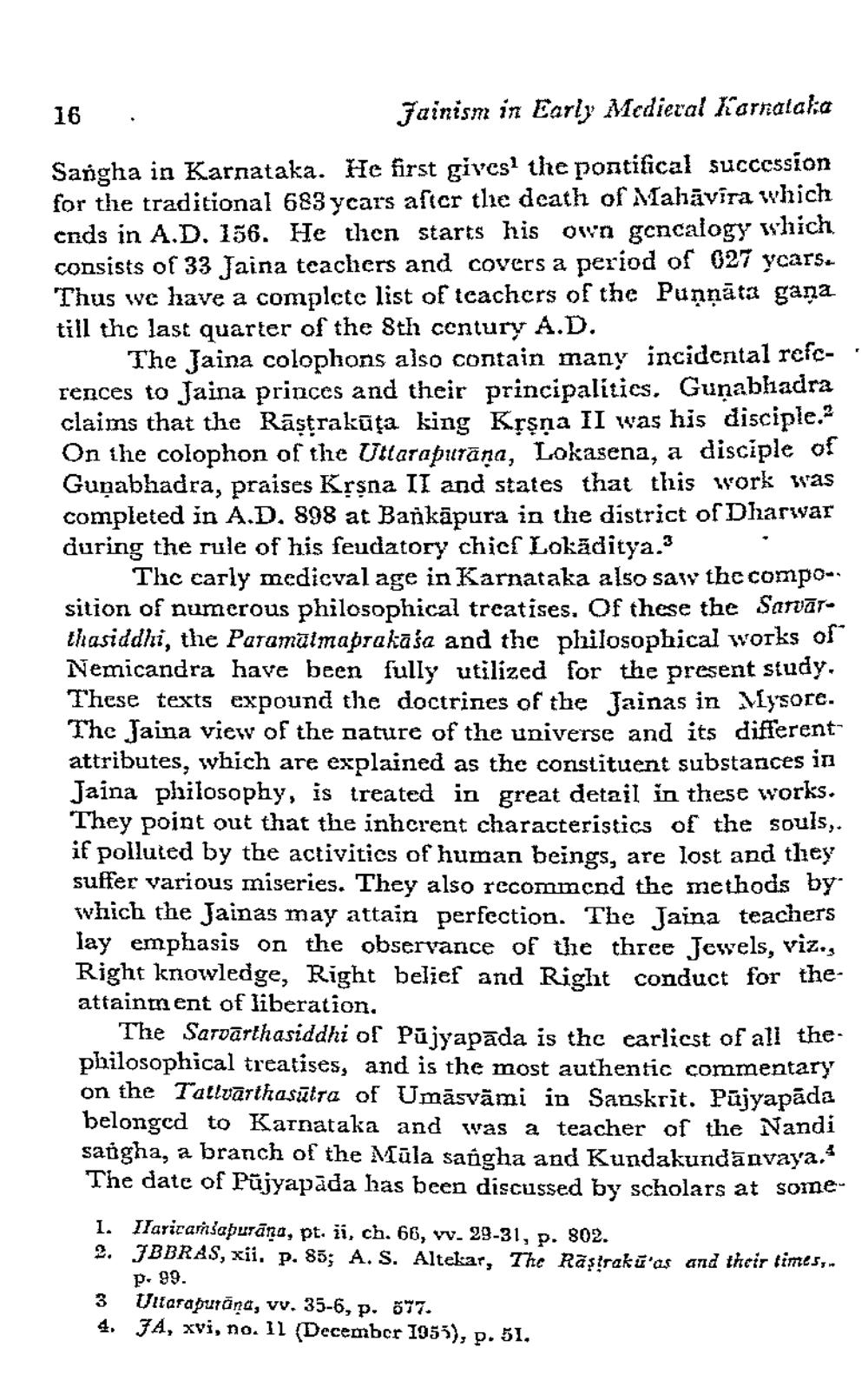________________
Jainism in Early Medieval Karnataka
Sangha in Karnataka. He first gives the pontifical succession for the traditional 683 years after the death of Mahavira which ends in A.D. 156. He then starts his own genealogy which consists of 33 Jaina teachers and covers a period of 027 years. Thus we have a complete list of teachers of the Punņāta gaṇa till the last quarter of the 8th century A.D.
16
The Jaina colophons also contain many incidental references to Jaina princes and their principalities. Gunabhadra claims that the Rāṣṭrakūta king Kṛṣṇa II was his disciple.2 On the colophon of the Uttarapurana, Lokasena, a disciple of Gunabhadra, praises Kṛṣna II and states that this work was completed in A.D. 898 at Bankapura in the district of Dharwar during the rule of his feudatory chief Lokāditya."
The early medieval age in Karnataka also saw the compo.. sition of numerous philosophical treatises. Of these the Sarvarthasiddhi, the Paramātmaprakāśa and the philosophical works of Nemicandra have been fully utilized for the present study. These texts expound the doctrines of the Jainas in Mysore. The Jaina view of the nature of the universe and its differentattributes, which are explained as the constituent substances in Jaina philosophy, is treated in great detail in these works. They point out that the inherent characteristics of the souls,. if polluted by the activities of human beings, are lost and they suffer various miseries. They also recommend the methods by which the Jainas may attain perfection. The Jaina teachers lay emphasis on the observance of the three Jewels, viz., Right knowledge, Right belief and Right conduct for theattainment of liberation.
The Sarvarthasiddhi of Pujyapada is the earliest of all thephilosophical treatises, and is the most authentic commentary on the Tattvarthasutra of Umāsvami in Sanskrit. Pujyapāda belonged to Karnataka and was a teacher of the Nandi sangha, a branch of the Mula sangha and Kundakundānvaya.4 The date of Pujyapāda has been discussed by scholars at some
1. Ilaricamsapurāṇa, pt. ii, ch. 66, vv. 29-31, p. 802.
2. JBBRAS, xii. p. 85; A. S. Altekar, The Rāṣṭrakū'as and their times,.
P. 99.
3 Ultarapurāṇa, vv. 35-6, p. 577.
4. JA, xvi, no. 11 (December 1955), p. 51.




